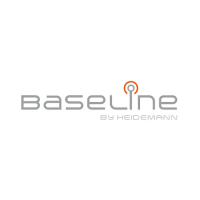BaseStation 1000 Irrigation Controller
Upper Threshold
Moisture Sensor-Based Watering
If you have a Baseline soil moisture sensor (biSensor™) installed in your landscaping and connected to
your BaseStation 1000 irrigation controller, you can program the controller to water based on the
moisture levels in the soil. This watering strategy can reduce outdoor water use by up to 62 percent or
more over traditional irrigation methods. And, by watering your plants when needed, you can increase
landscape health, promote deeper root growth, and make your plants more disease resistant.
For areas that have a restricted schedule such as specific watering days or specific use schedules like
sports fields, upper threshold (also referred to as “greater than limit” or “upper limit”) is a popular
watering strategy. With upper threshold, you can choose which day and what time of day to start
watering and the sensor will shut off watering when soil moisture reaches the upper threshold.
Overview of Soil Moisture Levels
The amount of moisture held in the soil varies depending on the type of soil and the amount of time
between watering events. When you’re using a sensor-based watering methodology, you should have a
general understanding of the water holding capacity of various types of soil. We’ve included a brief
description of the standard soil moisture content levels in this document. You can learn more about soil
moisture content, soil classification, and infiltration and water movement in Baseline’s document titled
Watering with Soil Moisture Sensors
.
Soil moisture content is identified by the following levels:
Saturation: At the saturation level, nearly all of the spaces between soil particles are filled with water.
As a rule, irrigators do not want to saturate the soil because it cuts off the plant’s supply of oxygen,
which, in effect, drowns the plant.
Field Capacity: When soil is at the field capacity level, it means that all excess moisture has drained
freely from that soil. The amount of remaining moisture is the field capacity. To irrigate properly, you
would turn off the water when the soil in the root zone of the plants reaches field capacity. A Baseline
biSensor measures field capacity in the calibration process and uses this value as the basis for other
settings.
Maximum Allowed Depletion (MAD): In most cases, the maximum allowed depletion level is just before
the plants begin to show visible signs of stress. Irrigators typically start watering at or before MAD is
reached because they don’t want their landscapes to show signs of stress. MAD is not measured
because it is based on observation and opinion.
Permanent Wilting Point: At the permanent wilting point, the level of water in the soil is not sufficient
to meet the plant’s needs.
Baseline Support: 866-294-5847 1 www.baselinesystems.com

